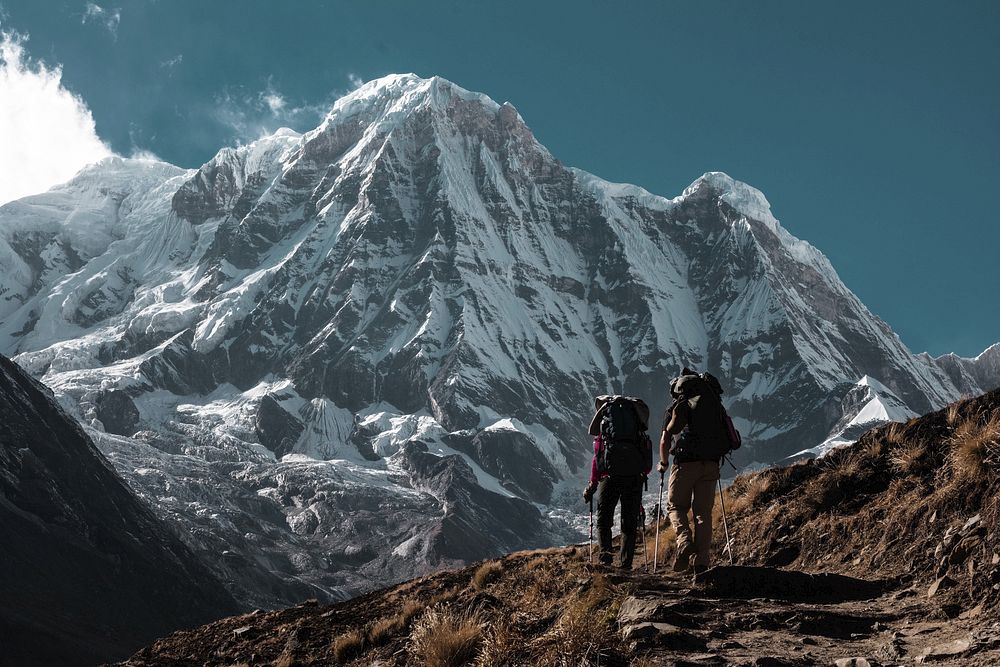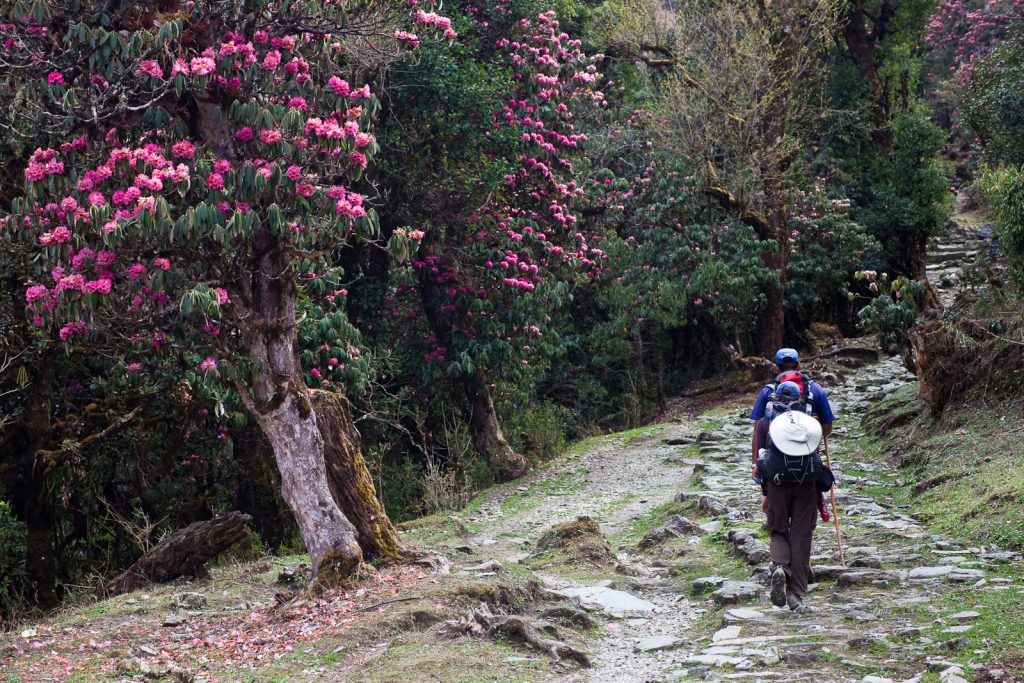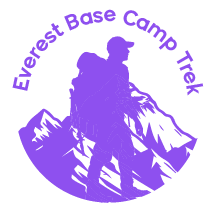Top 10 Things You Should Know Before Going on a Everest Basecamp Trek
Top 10 Things You Should Know Before Going on a Everest Basecamp Trek. Going on the Everest Base Camp trek is a big adventure that requires careful planning and preparation. It’s not just about packing your bags; you need to be ready in many ways to ensure a successful and enjoyable trek. From getting fit and understanding altitude sickness to packing the right gear and respecting local culture, there are several important things to know before you set off. This guide will help you understand the key points you need to consider to make your journey to Everest Base Camp as smooth and rewarding as possible.
Preparation and Fitness Level

Why Fitness Matters for Everest Base Camp
Going on the Everest Base Camp trek is a big adventure. It involves walking for many hours each day and climbing to high altitudes, which means your body needs to be ready. Here’s why being fit is so important and how you can prepare:
Long Walks Every Day
- During the trek, you’ll be walking for 6-8 hours a day. That’s a lot of walking! To make this easier, you should build up your stamina and strength before you go. This means doing exercises that help you walk longer distances without getting too tired.
Climbing to High Places
- The trek takes you up to around 5,364 meters (17,598 feet) at Everest Base Camp. At this height, the air is thinner, which can make breathing harder. Being in good shape helps your body handle the lower oxygen levels better and reduces the risk of feeling sick from the altitude.
Cardio Training
- To get ready, focus on cardio exercises. This includes activities like running, cycling, or swimming. Cardio exercises help your heart and lungs get stronger, so you can handle long hikes and tough climbs.
Endurance and Strength
- Along with cardio, do strength training exercises. Squats, lunges, and step-ups can build the leg muscles you’ll use a lot on the trek. Strong muscles help you carry your backpack and keep moving without getting too tired.
Practice Hikes
- If possible, do some practice hikes with a loaded backpack. This helps your body get used to the weight you’ll be carrying and the kind of terrain you’ll encounter. Try hiking on hills or uneven ground to mimic the trek conditions.
Listen to Your Body
- While preparing, pay attention to how your body feels. If you start to feel pain or exhaustion, it’s important to rest and recover. This will help you avoid injuries and be in better shape for the actual trek.
Understanding Altitude Sickness
What is Altitude Sickness?
Altitude sickness occurs when you go to high places too quickly. As you climb higher, there is less oxygen in the air. This can make you feel sick even if you are fit and healthy.
Symptoms of Altitude Sickness
Common symptoms include:
- Headaches: Your head may feel like it’s pounding.
- Nausea: You might feel like you want to throw up.
- Dizziness: You might feel light-headed or unsteady.
How to Prevent Altitude Sickness
To avoid altitude sickness, it’s important to give your body time to adjust. This process is called acclimatization.
What is Acclimatization?
Acclimatization means allowing your body to get used to the high altitude slowly. To do this, you should plan to stay at certain points along your trek for extra days. This will help your body adjust to the thinner air.
What to Do if You Feel Sick
If you start feeling symptoms of altitude sickness:
- Tell Your Guide: They are experienced and can help you manage the situation.
- Rest and Drink Water: Stay hydrated and try to rest.
- Consider Going Down: If symptoms don’t improve, you may need to go to a lower altitude to feel better.
Follow Your Guide’s Advice
Always listen to your guide’s recommendations. They have experience dealing with altitude sickness and can offer the best advice to keep you safe.
By understanding and preparing for altitude sickness, you can help ensure a safer and more enjoyable trek to Everest Base Camp.
Proper Gear and Packing
Why the Right Gear is Important
Packing the right gear for your trek to Everest Base Camp is really important. Good gear helps keep you safe, warm, and comfortable.
What Gear to Bring
Here are some essential items you need:
1. Waterproof Clothing
- Why: It rains and snows in the mountains. Waterproof clothes keep you dry and warm.
- What to Pack: A waterproof jacket and pants.
2. Thermal Layers
- Why: It gets very cold at high altitudes. Thermal layers keep you warm.
- What to Pack: Warm base layers for your top and bottom, like thermal shirts and pants.
3. Trekking Poles
- Why: Trekking poles help you walk uphill and downhill more easily. They also reduce strain on your knees.
- What to Pack: Adjustable trekking poles.
4. High-Quality Sleeping Bag
- Why: You’ll be sleeping in cold conditions. A good sleeping bag keeps you warm at night.
- What to Pack: A sleeping bag rated for very cold temperatures.
5. Footwear
- Why: You’ll be walking a lot, and good shoes help prevent blisters and keep your feet comfortable.
- What to Pack: Sturdy trekking boots that are waterproof and have good grip.
6. Gear for Cold and Wet Conditions
- Why: The weather can change quickly. You need gear that handles both cold and wet conditions.
- What to Pack: Warm gloves, hats, and waterproof covers for your backpack.
Final Tips
- Double-Check Your Gear: Make sure everything is in good condition and fits properly before you start your trek.
- Pack Light but Smart: Only bring what you need to avoid carrying extra weight.
By bringing the right gear and packing carefully, you’ll be prepared for the challenges of the Everest Base Camp trek and can enjoy your adventure more.
Permits and Documentation
Why You Need Permits
Before you go trekking to Everest Base Camp, you need some important documents. These are called permits. They allow you to enter and trek in the protected areas.
The Main Permits You Need
1. Sagarmatha National Park Permit
- Why: This permit is needed because Everest Base Camp is inside Sagarmatha National Park. It helps protect the park and its wildlife.
- How to Get It: You can get this permit in Kathmandu or from certain offices in Nepal. It costs a small fee.
2. TIMS (Trekkers’ Information Management System) Card
- Why: The TIMS card helps track trekkers and ensures your safety. It helps authorities know who is trekking in the area.
- How to Get It: You can get the TIMS card in Kathmandu. It also has a small fee.
How to Prepare
- Get Your Permits Before the Trek: Make sure you have these permits ready before you start your trek. This will save you time and avoid any problems.
- Carry Copies: Bring copies of your permits and keep them in a safe place. It’s a good idea to have both physical and digital copies.
- Check Requirements: Sometimes rules change, so check the latest requirements before you travel to ensure you have everything you need.
Final Tips
- Plan Ahead: Apply for your permits a few weeks before your trek to avoid last-minute issues.
- Keep Documents Safe: Keep your permits and documents safe during your trek. You’ll need to show them at various checkpoints.
Choosing the Right Time to Trek

Why Timing Matters
When planning your trek to Everest Base Camp, choosing the right time is crucial. The weather can greatly impact your experience, so it’s best to go when conditions are ideal.
The Best Times to Go
Pre-Monsoon Season (March to May)
- Why It’s Good: During these months, the weather is generally clear and stable. You’ll get good views of the mountains with less chance of rain or snow.
- What to Expect: Temperatures are cool but manageable, and the skies are usually clear, perfect for trekking and sightseeing.
Post-Monsoon Season (Late September to November)
- Why It’s Good: After the monsoon season ends, the skies clear up, and the weather stabilizes again. You get good visibility and less rain.
- What to Expect: The temperatures start to drop, especially at higher altitudes, but the clear skies offer great views of Everest and the surrounding peaks.
Times to Avoid
Monsoon Season (June to August)
- Why It’s Not Ideal: It rains a lot during these months, and the trails can become muddy and slippery. There’s also a higher risk of landslides.
- What to Expect: Heavy rain can lead to poor visibility and challenging trekking conditions.
Winter Season (December to February)
- Why It’s Not Ideal: Winter brings cold temperatures, snow, and ice. The weather can be harsh, making trekking difficult.
- What to Expect: Extremely cold temperatures and snow can make trails hard to navigate and less enjoyable.
Final Tips
- Plan Ahead: Book your trek during the best seasons to ensure you have a great experience.
- Check Weather: Always check the latest weather forecasts before you go.
Choosing the right time for your trek will help you have a more enjoyable experience with better weather and clearer views of the stunning Everest region.
Accommodation and Meals
Where You’ll Stay
Types of Lodging
During your Everest Base Camp trek, you’ll be staying in basic lodges and tea houses. These are essential accommodations found along the trail and provide a place to rest after your daily trek. The lodges are usually family-run and offer a warm, welcoming atmosphere. They provide beds with blankets, but you might need to bring your own sleeping bag for extra warmth. Rooms are typically shared, so be prepared for communal living.
What to Expect
The amenities in these lodges are quite basic. You might not find luxurious facilities like hot showers or private bathrooms. However, they are clean and functional, providing you with everything you need to recharge for the next day’s trek. The rooms are simple, often with just a bed and a small table, but they serve their purpose well. Expect limited power supply, so charging your devices may require planning around power availability.
What You’ll Eat
Typical Meals
Meals on the trek are usually straightforward and designed to provide the necessary energy for your trekking activities. The menu typically includes dishes like rice, noodles, lentil soup (dal bhat), and vegetables. These meals are nutritious and filling but can be quite basic. Some lodges may offer a limited range of Western dishes like pasta or pancakes, but the local fare is your primary option. Breakfast might include porridge, eggs, and bread, while dinner usually features a hearty stew or curry.
Snacks to Bring
While the food provided at lodges is sufficient, bringing along some high-energy snacks can be very beneficial. Pack snacks like nuts, dried fruits, granola bars, and chocolate. These will help keep your energy levels up between meals and provide a quick boost when you need it. Snacks are particularly useful for long trekking days or when you need a little extra energy during breaks.
Cultural Sensitivity
Respecting Local Traditions
Sherpa Culture
The Everest region is rich in Sherpa culture, with traditions and customs that have been preserved for centuries. Sherpas are known for their incredible mountaineering skills and deep connection to their land. They follow a blend of Buddhist and Bon traditions, which shape their daily lives and community practices. Understanding and respecting these traditions is crucial for fostering positive interactions and gaining a deeper appreciation for the region.
How to Show Respect
When visiting monasteries or interacting with local Sherpas, it’s important to be respectful. Dress modestly, especially when entering religious sites. Remove your shoes before entering a monastery and avoid loud conversations. Learning a few basic phrases in the local language, such as “Namaste” (a common greeting) or “Dhanyabad” (thank you), can go a long way in showing respect and building rapport with the locals. Always ask permission before taking photos, particularly in sacred places.
Enriching Your Experience
Visit Local Sites
To truly enrich your trek, take the time to explore local sites and immerse yourself in Sherpa culture. Visit monasteries like Tengboche Monastery, which are not only spiritual centers but also offer stunning views of the surrounding mountains. Interact with local villagers, participate in traditional ceremonies if possible, and learn about their daily lives. This cultural engagement will provide you with a richer and more meaningful trekking experience.
Travel Insurance and Emergency Plans
Getting the Right Insurance
Insurance Coverage
Before embarking on your trek, ensure you have comprehensive travel insurance that covers high-altitude trekking and emergency evacuation. Trekking in high-altitude areas comes with risks, and having the right insurance is crucial for your safety. This insurance should cover medical expenses, trip cancellations, and emergency evacuation, including helicopter rescues if needed. Verify the coverage with your insurance provider to ensure it meets the specific needs of high-altitude trekking.
Emergency Services
Familiarize yourself with emergency procedures and services available along the trek. Know the locations of the nearest medical facilities and the availability of helicopter rescue services in case of severe altitude sickness or other emergencies. Your trekking company should provide information on these services, but having your own understanding will help you feel more prepared.
Safety First
Be Prepared
Being well-prepared with appropriate insurance and emergency plans ensures that you can handle any unexpected situations calmly. Review your insurance policy thoroughly and keep emergency contact numbers handy. Staying informed about the emergency services and having a plan in place will help you stay safe and enjoy your trek with greater peace of mind.
Preparing for the Everest Base Camp trek involves more than just physical training; it’s about understanding the challenges, packing wisely, and respecting the local culture. By getting fit, knowing how to handle altitude sickness, packing the right gear, and being aware of cultural sensitivities, you’ll be well-prepared for an incredible adventure. Make sure you plan ahead, stay informed, and follow these tips to have a safe, enjoyable, and memorable trek to one of the most iconic destinations in the world.
Ready to embark on your Everest Base Camp adventure? Everest Base Camp Trek is here to help you every step of the way. Contact us today to start planning your unforgettable journey!
